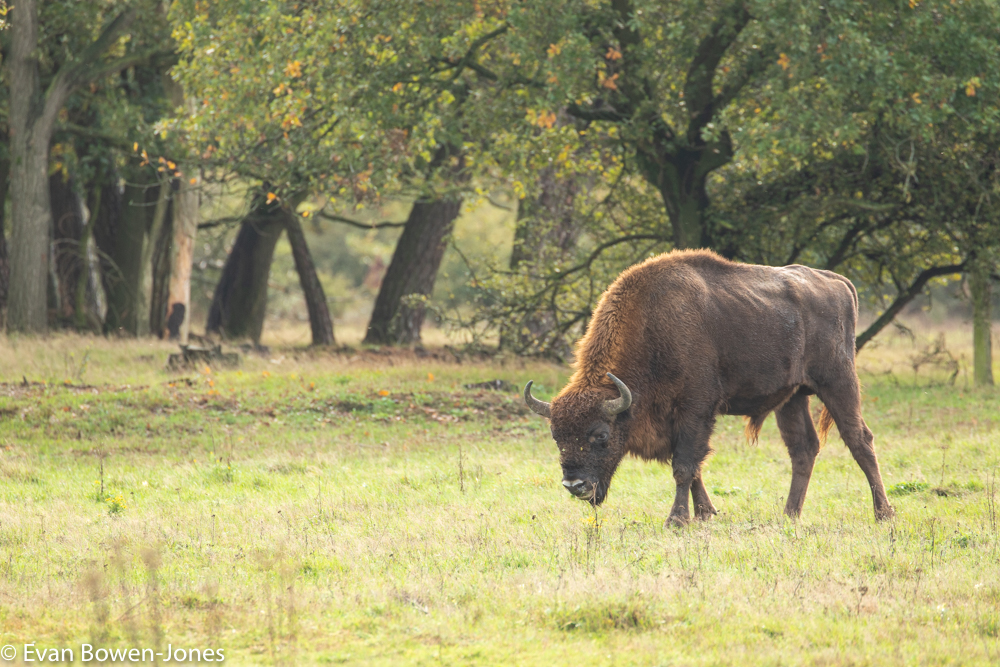Having gone extinct thousands of years ago, Europe’s largest land mammal was reintroduced to Britain last year.
Bison are believed to have disappeared due to human activity following the end of the last ice age which saw these islands cut off from Europe due to rising sea levels. These intelligent and adaptable beasts are set to transform the countryside using ancient, still not entirely understood behaviours.
As herbivorous bovine species, their diet consists mainly of grasses, fruits and woody material. Unlike their cow cousins which chew the ends of branches, bison take from the trunks, particularly in winter.
Known widely as ‘Wisent’ across the continent they practise ‘ring-barking’, a process of using their horns to tear bark to eat. They often target and kill invasive tree species which then fall bringing sunlight through the canopy to the forest floor where small plants can thrive. The deadwood attracts insects which in turn bring birds.
Cow wheat is the main food source of heath fritillary butterflies which only grow in cleared patches of woodland which bison create. The butterfly is also known as the ‘Woodsman’s Follower’.
They enjoy sand bathing and the patches they create invite pioneer plants, insects and reptiles.
Birds such as magpies love to perch on bison to inspect them for insects and use their fur as nesting material.
They disperse seeds caught in their fur and passed through to their dung. Their dung attracts insects which feed and breed.
Their large size and thick skin allow them to break through thick vegetation creating corridors for other species to pass through.
Males can weigh up to a tonne and 7ft at the shoulder and both genders can live up to 25 in the wild. They reach sexual maturity between four-six with a rutting season lasting between Aug-Oct. Their gestation period lasts, like humans, for nine months.
Their herds vary in size but are matriarchal, meaning led by an older female. Males are usually quite nomadic and return to herds to breed/rut with other males.
Bison are a keystone species meaning they define entire ecosystems – much like beavers, wolves and bees. Their behaviours are still being studied. For example, rangers in the Netherlands who have pioneered much wilding knowledge and practices have witnessed individuals trampling invasive rhododendron before urinating and rolling in the mixture. The plant’s sap is toxic and it is believed to form a type of insect repellent when mixed with bison urine.
Though slowly at first while being carefully managed, British bison numbers are expected to continue to grow. Last October saw the first calf born on these islands for thousands of years!

Maasthorst. Netherlands Evan Bowen-Jones
